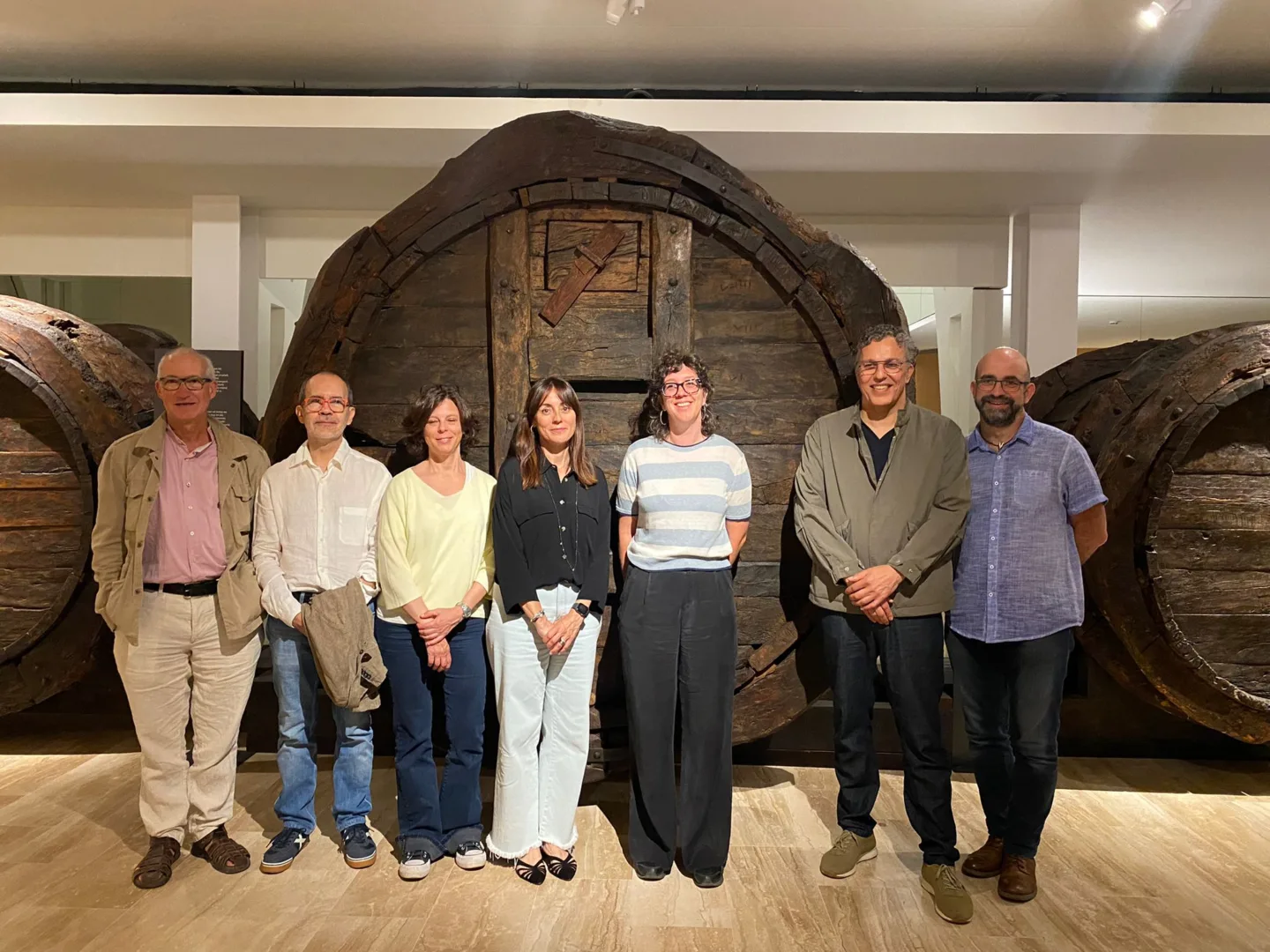VINSEUM brings wine history and culture closer to people with sensory disabilities thanks to the Barcelona Provincial Council’s ‘La Mirada Tàctil’ program
The museum, which is part of the Local Museums Network, incorporates eight tactile interpretation points, accessible videos, and Braille visit scripts into its permanent exhibition, diversifying its languages.
The Museum of Wine Cultures of Catalonia makes a firm commitment to improving the physical and cognitive accessibility of its recently inaugurated exhibition spaces. Thanks to the Barcelona Provincial Council’s ‘La Mirada Tàctil’ program, the Vilafranca museum ensures visits for all audiences, including from now on those people with sensory difficulties.
In this way, the history and culture of wine in Catalonia are now more accessible to all groups, including those with hearing, visual, and intellectual difficulties, as an effort has been made to diversify the languages used by the museum: sensory, auditory, and tactile.
As a member of the Local Museums Network, VINSEUM has access to different services and lines of action, among which is the ‘La Mirada Tàctil’ program. This program aims to explore the different collections exhibited in the network’s museums to offer, based on their typology and characteristics, the appropriate multisensory actions to make them accessible.
In the case of VINSEUM, the improvements in cultural accessibility include both actions in museography and improvements in the communication of the permanent exhibition. These actions guarantee access for groups with disabilities, while at the same time enriching the visit for all users.
Museographic actions of ‘La Mirada Tàctil’
From now on, visitors with disabilities will be able to enjoy the permanent exhibition through eight tactile interpretation points. These points show eight objects from the collection (originals and reproductions) and are related to the museographic discourse of their environment, located in the stable exhibitions ‘Les arrels’ and ‘Les Cultures del Vi de Catalunya’. Labels in large print and Braille have also been included, suitable for visitors with visual needs.
In the selection of reproduced objects, consideration has been given not only to their importance in the museum’s discourse, but also to the possibility of being interpreted through touch. The objects are made of wood, ceramic, bronze, stone, and iron.
The tactile point called Lletres d’impremta provides information about the Freinet pedagogical method that Penedès schools applied and that promoted students’ contact with nature. In the rest of the points, objects such as the pruning shears for cutting vine shoots, a gray Vilafranca pitcher, a Roman bull figure, a Neolithic axe, a vertical press with a descending central screw, a leather wine skin, and a Dressel amphora are presented.
Communicative accessibility actions
‘La Mirada Tàctil’ also has communicative resources that complement the museographic elements and allow adapting the museum’s contents to make them accessible. In the case of VINSEUM, they include video capsules in sign language (LSC), Braille and large print guides, and various tactile drawings.
For the videos, content from the audio guide of the stable exhibition ‘Les arrels’ on the basement floor, from the two audiovisuals of the exhibition ‘La plaça del vi’ on the ground floor, and from three objects from the collections present in the exhibition ‘Les cultures del vi de Catalunya’, located on the three upper floors of the museum, has been used. The videos are in capsule form with a Catalan sign language (LSC) interpreter and subtitles for oral deaf people, as well as the original Catalan narration.
Access to these video capsules is done through a QR code. They can also be viewed on the YouTube channel
Regarding the accessible visit guides for people with visual difficulties, we have texts in Braille, large print, and relief drawings that allow recognizing certain museum objects that are important for understanding the overall exhibition discourse.
During 2025, this accessibility work will continue in the rest of the museum. In all actions, ‘La Mirada Tàctil’ has had the collaboration of the ONCE Bibliographic Service and the Federation of Deaf People of Catalonia (FESOCA).
With the desire to open the museum to everyone, VINSEUM adds the elements provided by ‘La Mirada Tàctil’ to the transcription of room texts in easy reading in Catalan and Spanish and the easy reading guides to facilitate visits for people with temporary or permanent reading difficulties. In order to allow visits for people with psychomotor difficulties, a wheelchair and portable stools have also been incorporated. These cognitive and mobility improvements have had the support of the Generalitat’s Department of Culture.
About ‘La Mirada Tàctil’
Since 2007, the Cultural Heritage Office of the Barcelona Provincial Council’s Culture Area has been developing different actions to guarantee the accessibility of museums and heritage to all users, including groups that suffer from some type of sensory, physical, or cognitive disability.
The actions carried out through the ‘La Mirada Tàctil’ Program explore the communicative potential of permanent exhibitions through tactile, auditory, sound, olfactory approaches, and using both new technologies and analog resources. The actions carried out, in addition to guaranteeing access for groups with disabilities, enrich the visit for all users by favoring more personal and emotional experiences and experiences of heritage.
The ‘La Mirada Tàctil’ Channel on YouTube
It was created on December 17th, 2013, since then, it has obtained 131,000 views and 3,000 hours of viewing. It has 542 subscribers. During 2025, it already has 8,158 accumulated views.
To date, ‘La Mirada Tàctil’ has adapted the permanent exhibitions to 44 facilities in 35 municipalities.
The Local Museums Network is made up of 65 facilities from 51 municipalities and coordinated by the Barcelona Provincial Council’s Cultural Heritage Office. Currently, from the Cultural Heritage Office, 67.9% of the museums belonging to the Local Museums Network have been adapted.
